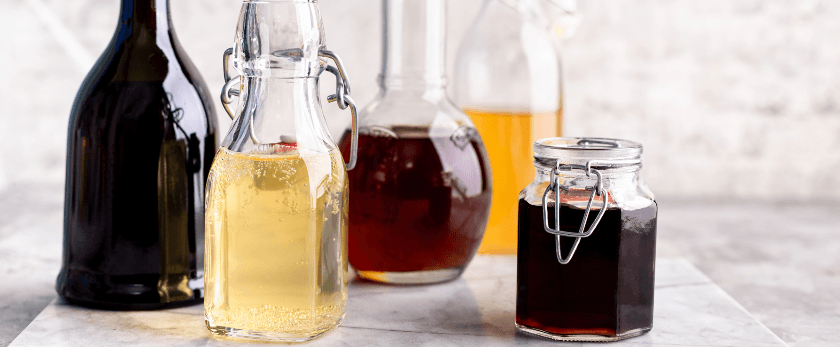Welcome to the world of homemade vinegar! In this article, we'll explore the benefits of making your own vinegar at home, not just for your wallet but also for the environment. We'll discuss why store-bought vinegar can be harmful to the planet and how making your own can be a simple and sustainable solution. So let's dive in and learn how to make our own vinegar at home!
Why Store-Bought Vinegar is Bad for the Environment
You may be wondering, how can something as simple as vinegar be bad for the environment? Well, the truth is, most store-bought vinegar is made from petroleum-based products, which are not only harmful to the environment but also to our health. These products are often derived from non-renewable resources and contribute to air and water pollution.
Additionally, the production and transportation of store-bought vinegar also have a significant carbon footprint. The packaging used for vinegar, such as plastic bottles and caps, also contribute to the growing problem of plastic pollution. And let's not forget about the energy used to power the factories that produce and package the vinegar.
Why Making Your Own is Better for the Environment
Making your own vinegar at home is a much more eco-friendly option. By using natural ingredients and simple methods, you can reduce your carbon footprint and minimize your impact on the environment. Here are some of the ways in which making your own vinegar is better for the planet:
- Uses natural ingredients: Homemade vinegar is made from natural ingredients such as fruits, vegetables, and grains, which are biodegradable and do not harm the environment.
- Reduces carbon footprint: By making your own vinegar at home, you eliminate the need for transportation and packaging, reducing your carbon footprint.
- Minimizes waste: Making your own vinegar allows you to reuse and repurpose ingredients, reducing the amount of waste that ends up in landfills.
- Saves energy: Homemade vinegar requires minimal energy to produce, compared to the energy-intensive processes used in commercial production.

What You'll Need to Make Homemade Vinegar
Making your own vinegar at home is a simple and affordable process. Here are the basic ingredients and equipment you'll need to get started:
- A large glass jar or container with a wide opening
- Organic fruits, vegetables, or grains (such as apples, grapes, berries, or rice)
- Water
- Sugar
- Cheesecloth or coffee filter
- Rubber band
- A dark, warm place to store the jar
Directions for Making Homemade Vinegar
Now that you have all the necessary ingredients and equipment, let's dive into the step-by-step process of making your own vinegar at home:
-
Prepare the fruit, vegetable, or grain: Start by washing and chopping your chosen ingredient into small pieces. If using fruits or vegetables, remove any seeds or pits. If using grains, rinse them thoroughly.
-
Place the ingredient in the jar: Place the chopped ingredient in the jar, filling it about 3/4 of the way.
-
Add water and sugar: Pour enough water into the jar to cover the ingredient, leaving some space at the top. Add 1-2 tablespoons of sugar per cup of water. The sugar will act as food for the bacteria that will turn the mixture into vinegar.
-
Cover the jar: Cover the jar with a cheesecloth or coffee filter and secure it with a rubber band. This will allow air to flow in and out of the jar while keeping out any debris or insects.
-
Store in a warm, dark place: Place the jar in a warm, dark place, such as a pantry or cupboard. The ideal temperature for vinegar production is between 60-80°F.
-
Stir daily: Stir the mixture daily with a wooden or plastic spoon to introduce oxygen and help the fermentation process.
-
Wait for the vinegar to form: After a few weeks, you'll start to see a layer of scum forming on the surface. This is a sign that the vinegar is forming. You can taste the vinegar after a few weeks to see if it has reached your desired level of acidity. If not, continue to let it ferment for a few more weeks.
-
Strain and store: Once the vinegar has reached your desired level of acidity, strain it through a cheesecloth or coffee filter to remove any solids. Store the vinegar in a clean glass jar or bottle with a tight-fitting lid.
Congratulations, you've just made your own homemade vinegar!
Responsible Disposal of Vinegar Waste
While making your own vinegar is a sustainable and eco-friendly option, it's important to dispose of any waste properly. Here are some tips for responsible disposal of vinegar waste:
- Compost fruit and vegetable scraps: If you used fruits or vegetables to make your vinegar, you can compost the scraps instead of throwing them away. This will help reduce waste and create nutrient-rich soil for your garden.
- Reuse grains: If you used grains to make your vinegar, you can reuse them in other recipes, such as bread or pancakes.
- Recycle glass jars and bottles: Once you've finished your vinegar, make sure to recycle the glass jar or bottle. This will help reduce the amount of waste that ends up in landfills.
Conclusion
Making your own vinegar at home is not only a fun and rewarding DIY project, but it's also a sustainable and eco-friendly option. By using natural ingredients and simple methods, you can reduce your carbon footprint and minimize your impact on the environment. So why not give it a try and start making your own homemade vinegar today? Your wallet and the planet will thank you!










